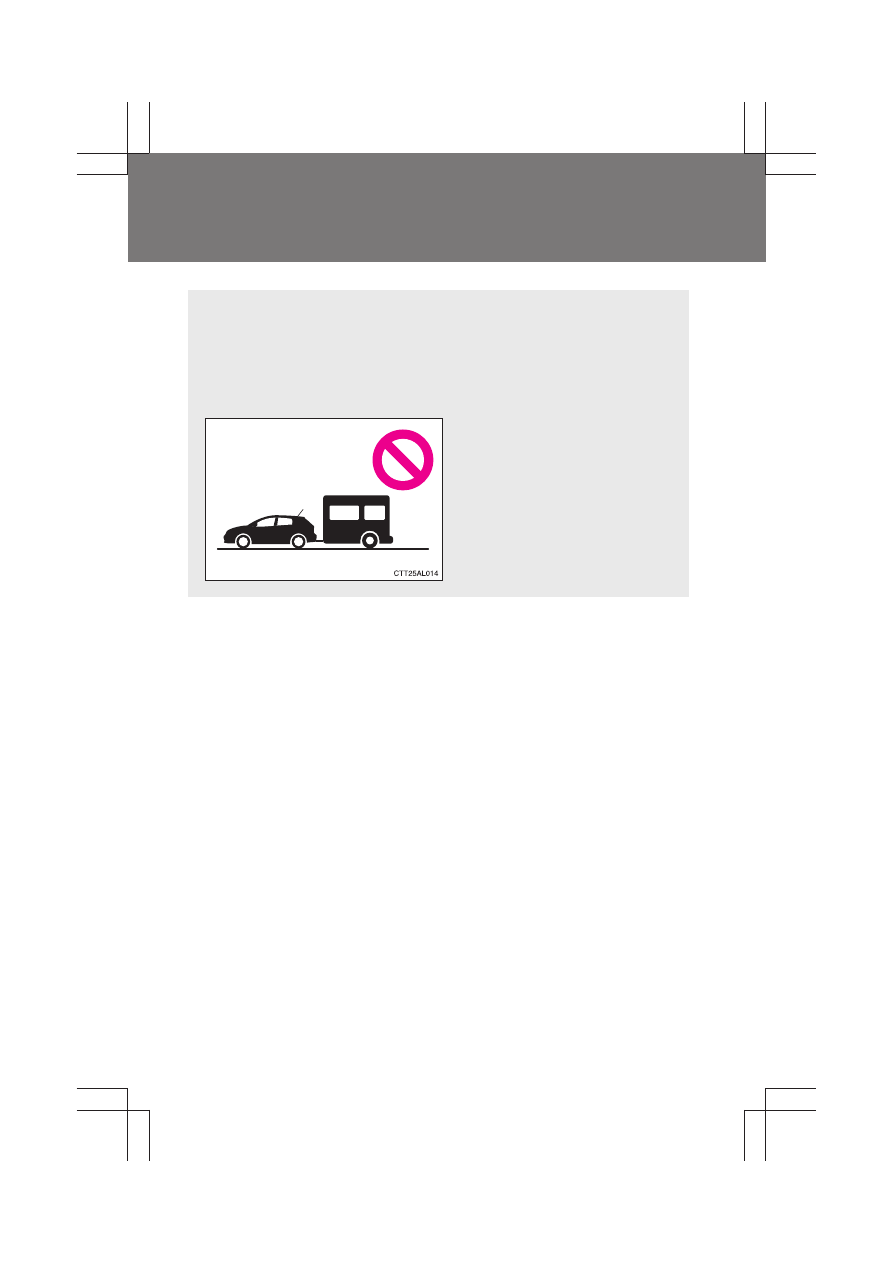Toyota Matrix (2014 year). Instruction - part 11

166
2-5. Driving information
MATRIX_U
Trailer towing (1.8 L 4-cylinder [2ZR-FE] engine)
Toyota does not recommend towing a trailer with your vehicle.
Toyota also does not recommend the installation of a tow hitch or
the use of a tow hitch carrier for a wheelchair, scooter, bicycle, etc.
Your Toyota is not designed for trailer towing or for the use of tow
hitch mounted carriers.